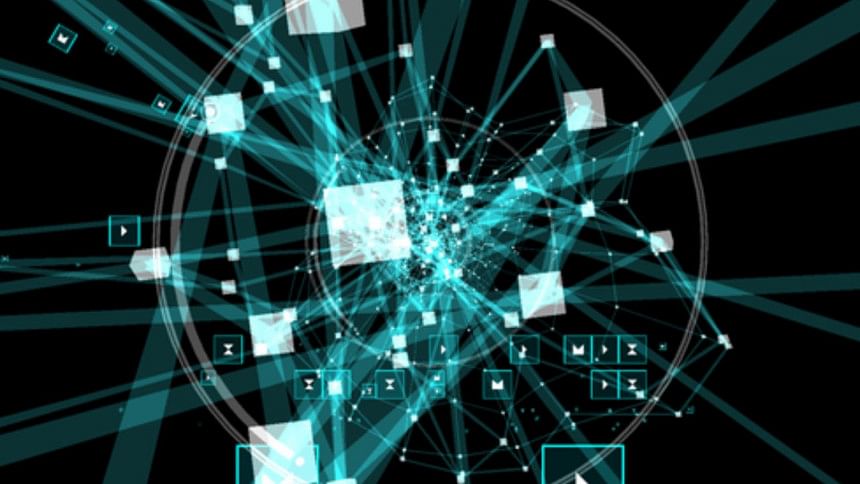The Fourth Industrial Revolution

Imagine a typical day's workload – morning starts with having breakfast, transporting ourselves to work, checking our mail, making decisions mostly in the corporate world on the basis of information surfed from the internet and other embedded systems. The end of the last century and the beginning of the 21st century witnessed phenomenal progress in artificial intelligence (AI), cloud computing, computer network with associated apps, social network, sensors and smart phones, large data gathering, storing, retrieving and analysing capabilities. Without even realizing it, we are undergoing a silent revolution where most of our activities are dependent on human-to-machine interaction.
The First and Second Industrial Revolutions (IR) relieved workers from mundane repetitive manual labour to mass machine production. The first IR was triggered by the Scottish mechanical engineer and innovator James Watt in collaboration with Englishman Mathew Boulton, as they perfected the steam engine by 1778. By then new chemicals and iron products had made their entry into the commercial world and the use of these products spread to other parts of Europe and North America. The second IR grew to include chemical industries, petroleum and various petroleum based products. The automotive industry had matured by then and a new revolution began with the large scale introduction of electricity. Hydroelectricity escalated industrialisation of European countries which had very little or no natural resources of their own.
The Third IR is said to have taken place in earnest between 1950 to 2000 when computers (discovery of transistors in 1947 played an important role) revolutionised the way we work, play, perform calculations and track events. Not only had computers begun taking over and controlling production processes, they also began to make a mark in our homes. The change from an analog mechanical and electronics technology to digital technology was a quantum jump in the Third IR that marked the beginning of the Information Age. Crucial to the revolution were the mass production of digital computers, cellular phones and the availability of the internet. Home computers, time sharing, video games, digital cameras, digital recordings, industrial robots had by then become commonplace. By the 90's, the World Wide Web (WWW) had connected almost every country through the internet. By the end of the century, cell phones, text messaging, HDTV became standard transmission broadcasting formats. By 2010, websites and social networking became standards in digital communication. Cloud computing had entered mainstream, and it is envisaged that within a few years tablet computers and smart phones will exceed all other electronic gadgets.
Silicon Valley is known in the world over as the Mecca of high technology industry and hundreds of tech startup companies. The Valley gained its fame possibly with the introduction of the IBM PC in early 1980. The leadership of Stanford University and its graduates along with Stanford University Research International and its affiliates have helped shape Silicon Valley, at least in the preliminary stages, to attain its present status.
As of 2013, tech industries employed close to 250,000 IT workers. We all remember the dot-com bubble of 1995; Silicon Valley was considered the center of that bubble that collapsed in 2000. After the collapse, industries diversified to software and operating systems, although semi-conductors still remain the region's major economy. Hundreds of leading high tech companies have their headquarters in Silicon Valley. Some of the famous ones are: Intel, Google, Facebook, Cisco System, Hewlett- Packard, Oracle Corporation, Apple Inc., eBay, ScanDisk, Yahoo etc. Those with significant presence are: Actel, Asus, Nokia, Olivetti, Panasonic, Paypal, Dell, Fujitsu, Sun Microsystems etc.
We had the privilege of visiting Stanford University and some of the high tech companies headquartered in San Jose, Santa Clara, Palo Alto, Menlo Park as well as San Mateo, last year. It was an unforgettable experience (reminded me of a similar experience when I was a research faculty at Tsukuba Science City near Tokyo in Japan). It was here that we were first introduced to the Fourth Industrial Revolution, a concept that envisages the merger of physical and digital worlds – the Cyber Physical Systems (CPS).
Within this framework, all activities of human as well as manufacturing and production will be managed by the CPS. The German industrial juggernaut in a report (Industries 4.0 Working Group) published in 2013 predicted a "fourth industrial revolution, one which promises to dramatically transform the workplace and make the entire world revolve around you". The German Government accepted the "High Tech Strategy" and is working towards its implementation. The USA also established the "Industrial Internet Consortium" in 2014 and industry giants as General Electric, AT&T, IBM and Intel are its active member. The fourth IR is a huge leap forward, particularly for industries where all innovations, performances and production will be managed by smart devices.
3–D printing is also expected to heavily influence manufacturing. The ABI Research Institute predicts that by 2020, 30 billion devices from a ballpoint pen to a Luxury Sea Liner will be connected with the internet. The fourth IR is truly a global phenomenon that is already evolving and both industrial nations and emerging economies like Bangladesh will seek further automation to strengthen its industrial base with the integration of Information Technology (IT) and Operational Technology (OT).
Bangladesh has a very vibrant IT sector where more than 20,000 people are employed. This sector, with a huge pool of young, energetic and talented people, is already serving both domestic and international clients. The government also recognised it as a thrust sector and plans on extending tax benefits to IT related services.
The writer is Professor of Physics, Jahangirnagar University, and a Fellow of the Royal Astronomical Society, UK.

 For all latest news, follow The Daily Star's Google News channel.
For all latest news, follow The Daily Star's Google News channel. 


Comments